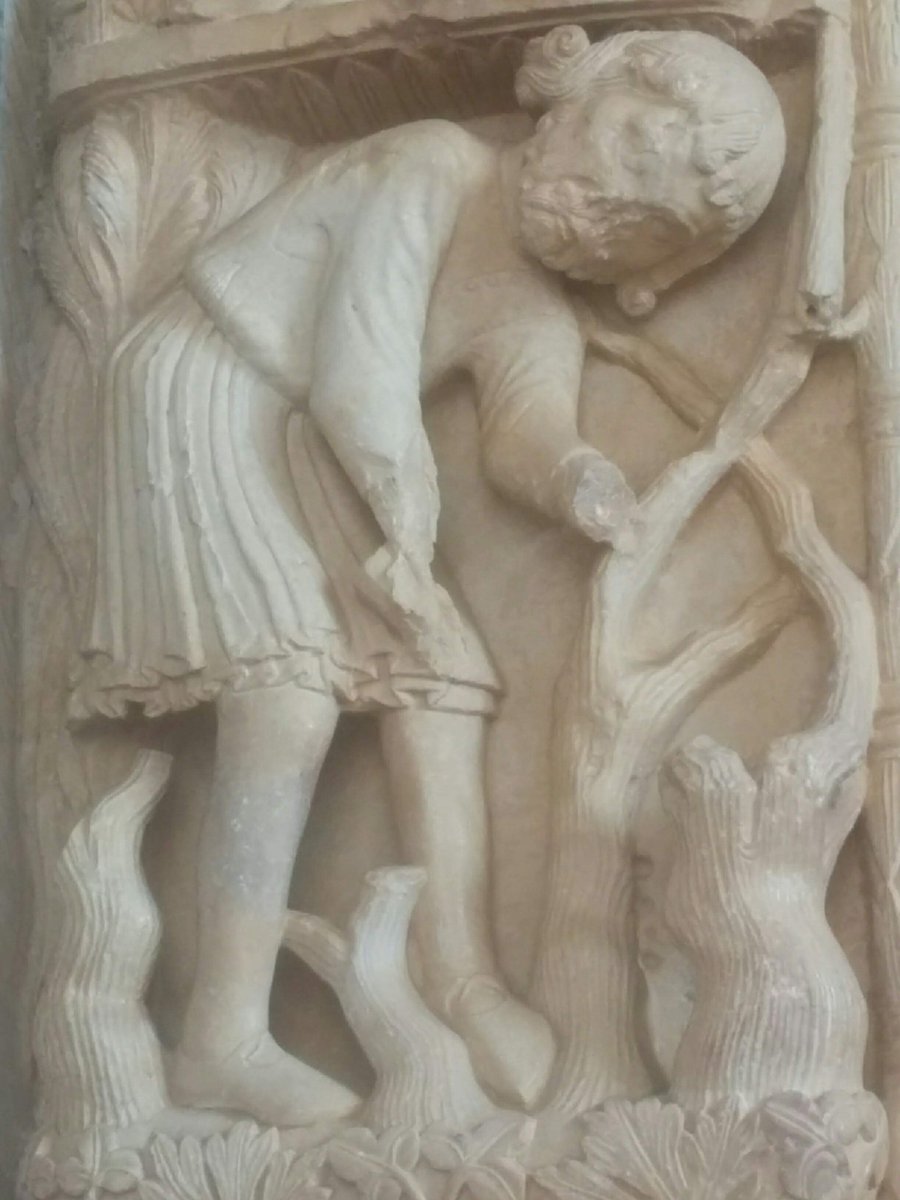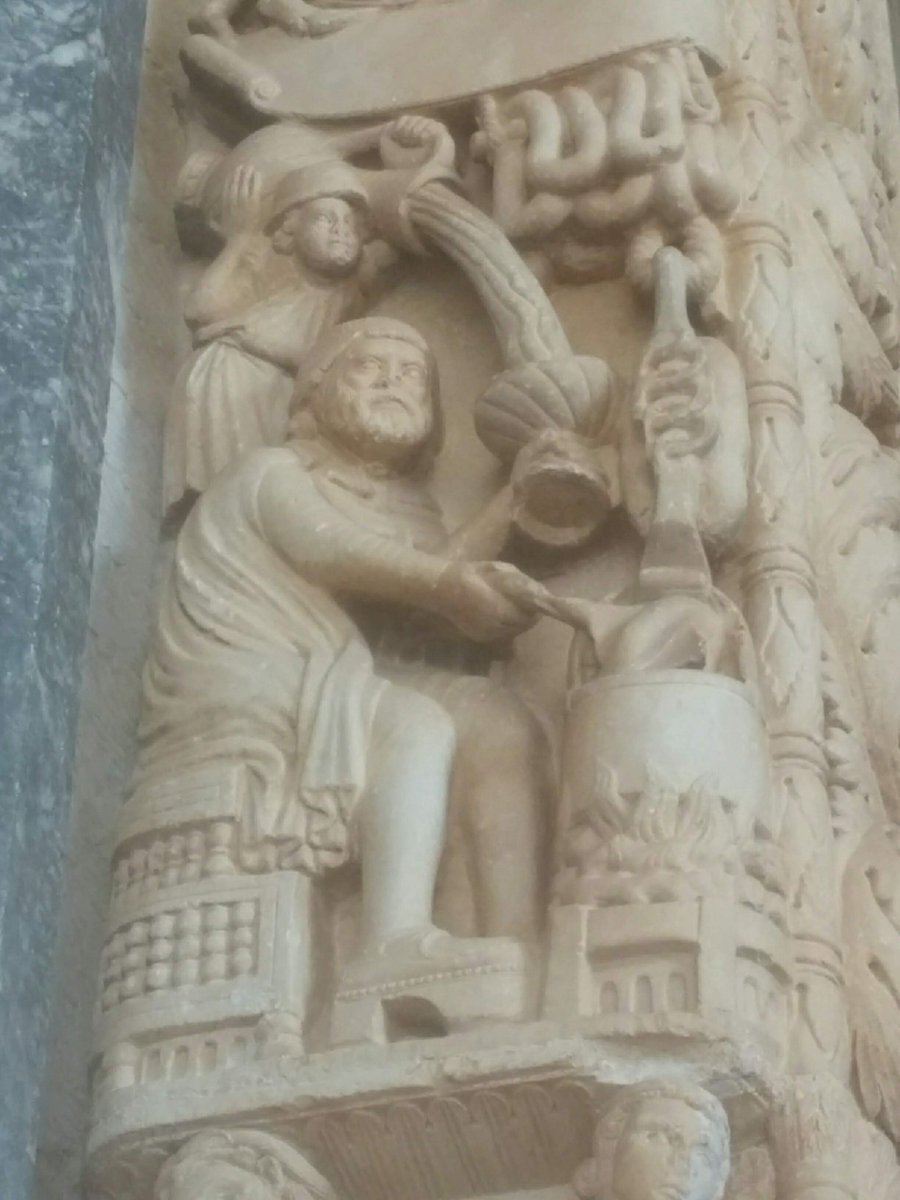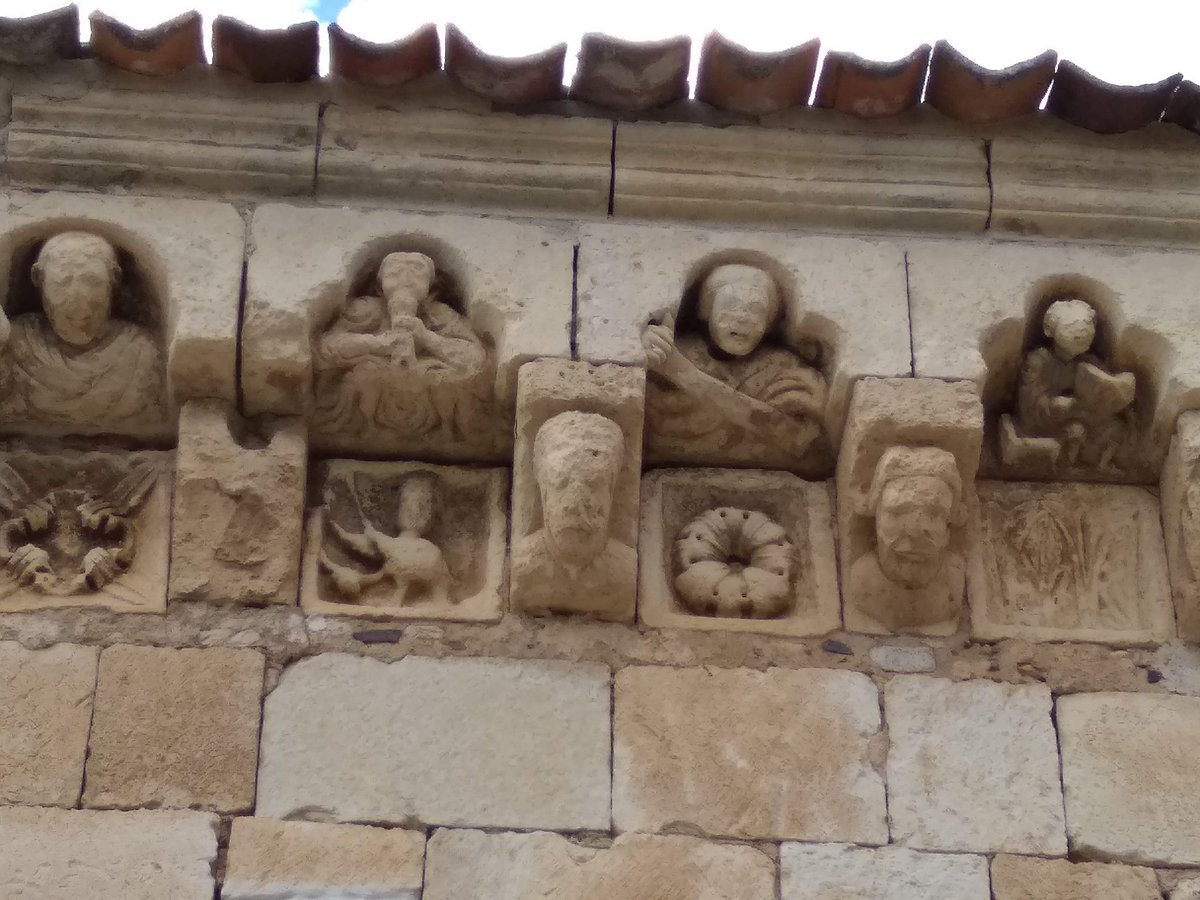This week& #39;s theme for #AnimalsInChurchesHour is #PeopleAtWorkInChurches, so I& #39;ll be putting up medieval workers from two different churches. First, this guy pruning the vines from the Church of Saint Lawrence in Trogir, Croatia.
Also from the thirteenth-century portal of Saint Lawrence in Trogir comes this spectacular sausage maker.
#AnimalsInChurchesHour
#PeopleAtWorkInChurches
#AnimalsInChurchesHour
#PeopleAtWorkInChurches
Moving on to another thirteenth-century church, this time Saint Michael& #39;s in Sotosalbos, Spain. Here we see another example of pruning the vines.
#AnimalsInChurchesHour
#PeopleAtWorkInChurches
#AnimalsInChurchesHour
#PeopleAtWorkInChurches
Another section of the sequence of carvings from Saint Michael& #39;s in Sotosalbos. Not entirely sure what the person at the table is doing, but he looks busy.
#AnimalsInChurchesHour
#PeopleAtWorkInChurches
#AnimalsInChurchesHour
#PeopleAtWorkInChurches
And the last one from Saint Michael& #39;s in Sotosalbos. On the right we see a scholar studying.
#AnimalsInChurchesHour
#PeopleAtWorkInChurches
#AnimalsInChurchesHour
#PeopleAtWorkInChurches
As a follow-up to these images: Medieval churches were often decorated with cycles of images, many of which featured workers of different kinds. Often, images of workers were part of the cycles of the labours of the month, showing which tasks were to be performed during the year.
The pruning of the vines, for instance, was the labour of the month for March, & this was a common theme throughout Latin Christendom, as evidenced by its inclusion in places as separate as Sotosalbos & Trogir, where no direct contact or dissemination of influences can be traced.
The sausage maker from Trogir represents January-February, as can be seen from the figure pouring water into the sausage maker& #39;s cup. This figure is the zodiacal sign of Aquarius.
But other labours not specified by the months can also be found in these cycles. As we see in Sotosalbos, even scholars are included. This points to the function of these image cycles as microcosms of Creation. They depicted the world & its various parts.
To put it differently: These cycles - available to all members of the congregations, to visitors, to other faith communities - served as a reminder that they were all part of the same world, the same structure, & they all served a function in God& #39;s creation.
Of course, this does not mean that these cycles represented an egalitarian view of Creation. There were hierarchies, there were in-groups & out-groups, there were the high & the low, the Christian & non-Christian, the saved & the damned. These cycles represented status quo.
For this reason, the image cycles of medieval churches provide us with an important insight into how the clergy perceived the world order, but not how other groups perceived it. The cycles do nonetheless provide us with images of social groups & occupations who left few traces.
If we look at the sausage maker from Trogir, his clogs, his equipment, the way he is curing the sausages, all these are details from life in thirteenth-century Croatia. Because although the representation is artistic, it necessarily draws on reality.
And we can be certain that these various snapshots of working life in the Middle Ages as shown in these cycles are based on reality rather than the artist& #39;s imagination, because it would be more difficult to explain why an artist would invent details rather than copy them.
Fin.
Fin.

 Read on Twitter
Read on Twitter






